Related Research Articles
Events from the year 1515 in art.

Vincenzo Foppa was an Italian painter from the Renaissance period. While few of his works survive, he was an esteemed and influential painter during his time and is considered the preeminent leader of the Early Lombard School. He spent his career working for the Sforza family, Dukes of Milan, in Pavia, as well as various other patrons throughout Lombardy and Liguria. He lived and worked in his native Brescia during his later years.

Vivarini is the surname of a family of painters from Murano (Venice), who produced a great quantity of work in Venice and its neighborhood in the 15th century, leading on to that phase of the school which is represented by Carpaccio and the Bellini family.

Giovanni Ambrogio de Predis was an Italian Renaissance painter, illuminator and designer of coins active in Milan. Ambrogio gained a reputation as a portraitist, including as a painter of miniatures, at the court of Ludovico Sforza.
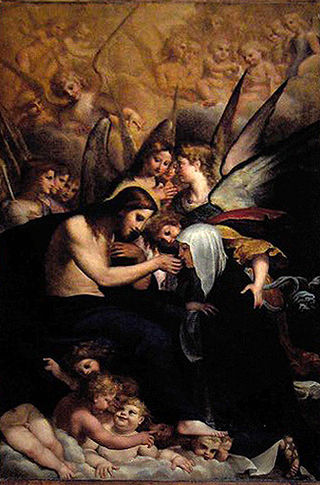
Francesco Brizio (1574–1623) was an Italian painter and engraver of the Bolognese School, active in the early-Baroque.

Giacomo Barucco was an Italian painter, active in a Mannerist style.

Giovanni Felice Ramelli (1666–1740) was an Italian painter of the Baroque period, active mainly in Rome. He also became an abbot of the Augustinian order of Canons Regular of the Lateran.
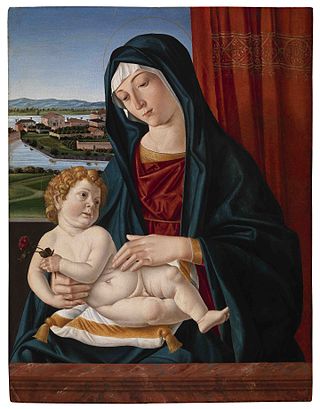
Cristoforo Caselli, also known as da Parma or il Temperello or Cristofaro Castelli, was an Italian painter of the Renaissance period.

Antonio Triva was an Italian painter and engraver of the Baroque period.

Niccolò Billy was an Italian engraver of the 18th century, active in Rome. Originally from France, he was active around 1734 along with his brother Antonio Billy. They engraved several portraits and historical subjects. Niccoló engraved some plates for the 12 volumes of the Museum Florentinum, including self-portraits of Federico Zuccari; Hans Holbein; Pier Leone Ghezzi; and Giovanni Morandi.

Girolamo Rossi was an Italian engraver of the late Baroque. He was also called Girolamo de Rubeis the Younger. He was born and lived most of his life in Rome, where he engraved a variety of plates after the Italian painters. He is said to have been a pupil of Camillo Rama, and painted in the style of Paolo Veronese. He also executed several portraits of the cardinals of his time, for a series which was afterwards continued by Pazzi and others.
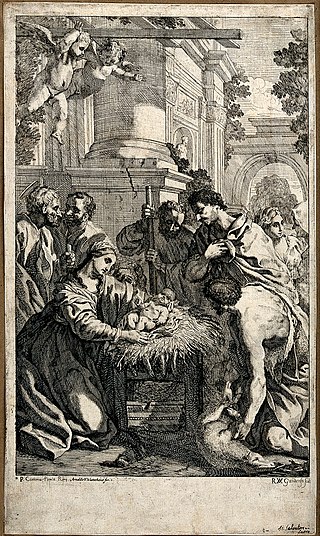
Robert van Audenaerde or Ouden-Aerd (1663–1748) was a Flemish painter and engraver.
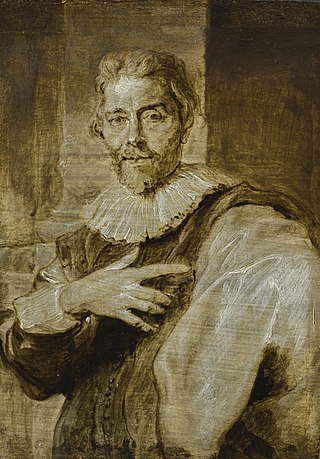
Jan Baptist Barbé or Jan-Baptist Barbé (1578–1649) was a Flemish engraver, publisher and art dealer active in Antwerp. He is known for his engravings after his own designs as well as for his reproductive engravings.
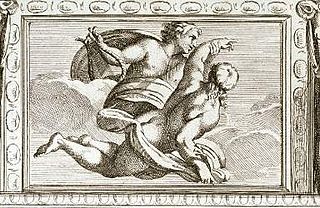
Carlo Cesio or Carlo Cesi was a Baroque-style painter and engraver of the Roman school.


The church of San Gaetano is an ancient church located on Via Calegari at the intersection of Via Monti in Brescia.

Sante Cattaneo or Santo Cattaneo was an Italian painter of the Neoclassic period, mainly active in Brescia.
Oliviero Gatti (1579–1648), an Italian painter and engraver, was a native of Parma. He was a scholar of Giovanni Lodovico Valesio, and, from the resemblance of his style, although greatly inferior, to that of Agostino Carracci, was probably instructed in engraving by that master. His works as a painter are little known; but he engraved several plates, some of which are after his own designs, which possess considerable merit. He was received into the Academy at Bologna in 1626, and was working in that city up to 1648.

San Niccolò al Carmine, also called Santa Maria del Carmine is a Renaissance style, Roman Catholic church and monastery located in Pian dei Mantellini #30, near the corner of Via della Diana in the Terzo de Citta of Siena, region of Tuscany, Italy. The church now serves as the Oratory for the Contrada of Pantera. Across the street from the belltower is the Palazzo Celsi Pollini. North along Pian dei Mantellini, toward the Arco delle Due Porte, and on the same side of the street are a number of palaces built around what was once the Monastery of the Derelict Women: in order they are the Neoclassical Palazzo Incontri, the Palazzo Ravissa and the Palazzo Segardi.

The Orzinuovi Altarpiece or Enthroned Madonna and Child with Saints Dominic, Joseph, Vincent Ferrer, Lucy and a Commissioner is a 1525–1530 oil on canvas painting by Moretto da Brescia on the wall of the chancel of the church of San Domenico in Orzinuovi.
References
- Bryan, Michael (1886). Robert Edmund Graves (ed.). Dictionary of Painters and Engravers, Biographical and Critical. Vol. I: A-K. London: George Bell and Sons. p. 181.
- ↑ Dizionario degli artisti bresciani by Stefano Fenaroli, page 68.
- ↑ S. Fenaroli, page 69.